When we last left NBC’s Emerald City, we were two hours into an often confusing, but gloriously shot and richly colored new look at Oz, that magical and weird place created by L. Frank Baum back in the early days of the 20th century.
How has the rest of the series gone?
I’d have to say, mixed.
MAJOR SPOILERS FOR ALL TEN EPISODES AHEAD
On the one hand, Emerald City seemed to want to engage in a genuine dialogue with the books, which presented a utopian fairyland ruled over by women, where no one ever ages or dies or, for that matter, apparently has sex, at least in the Baum books. It’s a concept that even the Oz characters sometimes struggled with, and which several different later authors have explored or critiqued in different ways. Emerald City, apparently doubtful of utopias, presents Oz and its neighbor, Ev, as countries created not through beneficial magic, focused on the common good, but countries under near constant threat of destruction, focused on a path of safety. It presents this as a conflict between the male Wizard, representing science, and the female Witches, representing magic, with some added tensions brought in by Dorothy, who both wields a gun (science) and, after acquiring the gloves of the Witch of the East, magic; Langwidere, a woman created and bound by science who plans to fight magic with guns; and Jane, a scientist trapped in a land of magic, who creates steampunk creatures that seem magical in her lab.
Oh, and Tip: born a girl, transformed (without her knowledge) into a boy by magic, transformed back into a girl when that magic is lost, transformed back into a boy once she gains magic by sipping the life force of a witch, transformed back into a girl, despite her desire to remain a boy, in order to convince the witches that she is truly Ozma, the child of Pastoria, and rightful heir to the throne of Oz—with a scene that shows us that when she looks at her reflection, she still sees a boy, not a girl.
Quite frankly, most of that made little sense in context within the show, since the show gave us no real reason why Tip had to become a girl again. After all, as a boy, Tip was able to do magic, and work the spell showing his memories of his parents’ assassination, from his viewpoint, to the witches, proving his identity. All he had to do was tell the truth: Hey, yes, I was born a girl, but Mombi transformed me into a boy and now I think of myself as a boy, so, you know, I’m going to stay a boy. He had plenty of witnesses—Jack, West, the various witches who watched him transform from boy to girl, the Cowardly Lion, and even—though I’d hesitate to pull either in as witnesses—Dorothy and the Scarecrow. Problem solved. Granted, it’s entirely possible that after the Wizard’s rule, Oz would prefer a woman as a ruler, but not everyone in Oz was against the Wizard’s rule, and quite a few feared witches. It’s possible that remaining a boy would be a better choice for this reason as well.
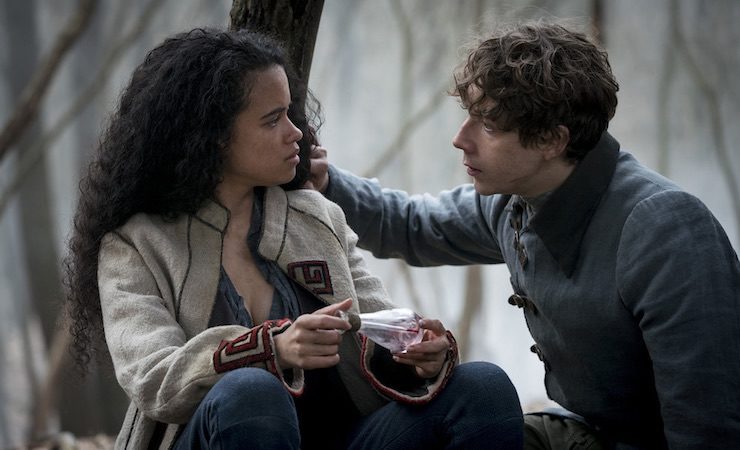
The clumsiness of this metaphor for a real life transgender situation was further muddled by the problem that this gender change was forced on Tip, not something independently developed or felt by Tip, and by Tip’s later willingness to engage in torture, or at least do nothing to stop it. The plot had its sympathetic moments, including a moment where Tip struggled to figure out which gendered stall to use, but these were overshadowed either by heavy handed “so my choices are to be a whore or a witch” moments, torture and the unanswered question of “Ok, but why DOES Tip have to stay a girl?”
Tip, however, was hardly the worst character on the show. That role belonged, hands down, to Dorothy, who started out stealing drugs from one of her patients, and continued by:
- Frequently leaving a traumatized little girl unsupervised and alone, a decision that led directly to the death of a king, increased tensions between Oz and Ev, and the death of several extras;
- Taking out that girl’s emotionally necessary earplugs without CHECKING WITH THE GIRL FIRST, despite knowing that doing so could and would endanger people around her (when scared, the girl had the ability to turn people to stone);
- Agreeing to use that little girl to help kill a woman she had never met, just so she could get home;
- Sleeping with a man suffering from severe amnesia. Dorothy, you’re a nurse. You didn’t once think this was a tad unethical? Oh, right. You’re a nurse who steals drugs from her patients. Moving on. (To be fair, I also had an identical UH WHAT reaction to a similar subplot in Wicked, since my inner nine year old still believes that Dorothy and the Scarecrow are JUST FRIENDS, thank you very much. Wicked, however, is not only operating in the confines of a Broadway show, but takes time to justify that narrative choice. Emerald City, not so much. But moving on.);
- Failing to tell said man about (a) her upcoming assassination plans or (b) her plan to dump him once said assassination was over;
- Trying to kill that man’s wife;
- Leaving Toto waiting outside Glinda’s palace for hours, if not days, without any food or water;
- LEAVING TOTO BEHIND IN THE HOUSE TO GET MURDERED BY THE SCARECROW like Toto, FIND ANOTHER HUMAN, STAT;
- Sending a stone giant stomping off to Ev, making bits and pieces of buildings fall down and crush and kill innocent people.
All this while changing character motives every five minutes. If Emerald City had been trying to make me Team Glinda, they could not have done a better job.
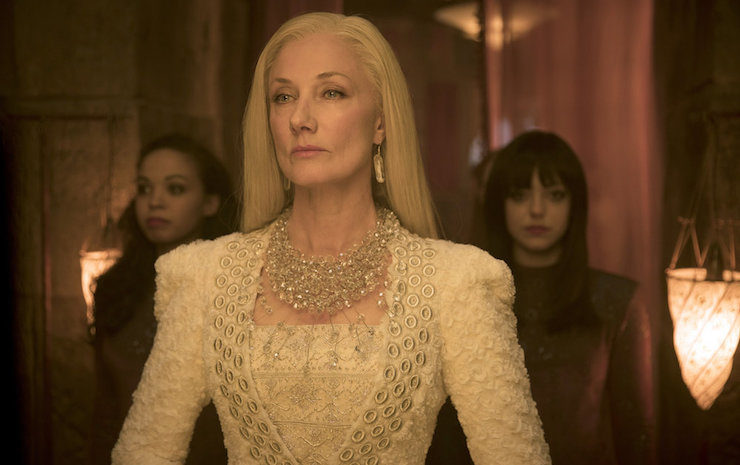
Other characters did not fare much better. Two remained compelling to watch throughout the show—the drug-addled, depressed, guilt ridden West, and always masked, always puzzling out social relationships Langwidere. West’s slow journey towards restoring justice to Oz remained one of the best parts of the show, even when she was busily torturing people or falling into a drugged despair. (It helped that she got most of the show’s best lines.) And Langwidere’s plot, coupled with a tense, fraught, relationship with a boy she had purchased and owned and wanted to turn into more, resolved into one of the better plot reveals on the show, even with all of its deeply problematic elements.
And I continued to find Jack’s story of transformation both sympathetic and compelling. But in a show with eight regular cast members and about six frequently recurring characters, three watchable, compelling characters are just not enough.
The show also more than occasionally found itself sinking beneath its muddled, contradictory messages. To go back to Tip for a moment, for instance, the show spent significant time with a character assuring Tip that the gender transformation potion was unnatural and wrong and not something anyone would do, implying that magic itself was evil and wrong—before, just a few episodes later, insisting that it was vitally important for Tip to restore that unnatural and wrong magic to Oz—while staying with her original, natural gender. Subplots were raised and then completely forgotten about, or given a hasty, not completely believable resolution. For example, what looked like an interesting mystery, or at least an interesting something, regarding Dorothy’s little hand tattoo was later explained away by Jane saying, “Yes, I gave you that tattoo when you were a baby, and sang a song about it.” Er, Jane? At that moment, you were in Oz, miles away from a tattoo parlour, and in any case, why were you giving an INFANT a tattoo?
The show’s dialogue with the books proved muddled in various ways as well. Emerald City did seem to pull a few concepts—including the Wizard’s “No magic is allowed in Oz” directly from the books. (On a related note, I felt that Tip/Ozma’s frequent terrible decisions and uncertain rulership after Glinda’s arrival were pulled directly from the books as well, but that very well may have been just me.) A few scenes also directly referenced the original John O’Neill illustrations, in particular the transformation illustration from The Marvelous Land of Oz, reproduced with similar framing. I may have squealed out loud, whatever my problems with the scene itself.
And—assuming the credits weren’t lying on this point—how much does it delight me that the greatest threat to Oz remains the Nome King, and how much does it really delight me that the witches used a living tree to imprison the Nome King, in a nice callback to the way living eggs in the books could steal the immortality of the Nomes—killing them. A LOT, is what I’m saying, and had more of the show been like this, I would have been delighted.
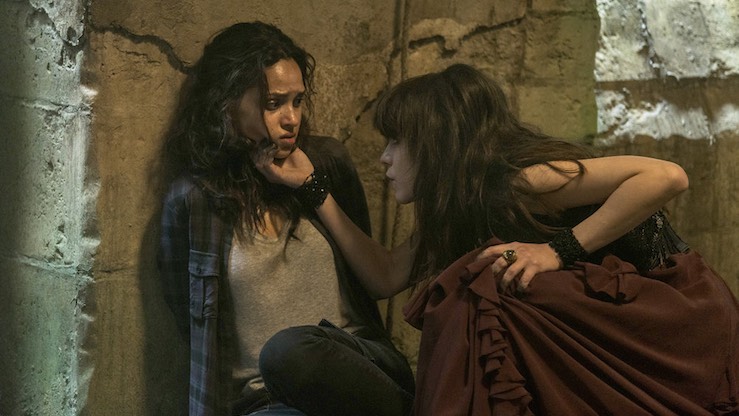
But most of the time, the show seemed to want to do its own thing entirely, with the occasionally book references feeling random and haphazard. For instance, after carefully putting nice blue streaks on the faces of the Munchkins (Munchkin country = blue), filming the country of the East with yellow filters, and adding touches of red to the costume of Glinda, ruler of the Quadling country, Emerald City then added an offhanded mention that the characters were heading up north to the Gillikin country, which lacked a single touch of purple. The circus moments seemed to be the ideal place for introducing the Hungry Tiger, or the Patchwork Girl, or even that horrible clown, but the circus scenes came and went without a hint of any of this.
Sometimes having that book knowledge could even be misleading. For instance, for all of Jack’s early talk of love and kindness—signs pointing to his later role as the Tin Woodman—I initially assumed that he would turn out to be Jack Pumpkinhead, on the basis that (a) Jack first appeared at Mombi’s home (as did Jack Pumpkinhead in the books ), (b) he was Tip’s first friend (as was Jack Pumpkinhead in the books) and (c) his name was Jack, as was… I think you can see where I’m going there. As a result, I completely missed that his name was a reference not to the Jack Pumpkinhead of the books, but to Jack Haley, who played the Tin Man in the 1939 Wizard of Oz, which would have clued me into his real identity sooner.
That book knowledge—and a look at a few publicity photos—also led me to assume, only slightly incorrectly, that the show would be giving us a Cowardly Lion very soon. As it turned out, that character did appear in every episode, just, well, not as a lion, and not as anyone particularly cowardly until the end; the entire plot smacked of “Oh, right, we need to add the Cowardly Lion. Who is around a lot and hasn’t been identified with a book character yet? Right. You. Lion.” It was the clumsiest introduction of an Oz element in a series filled with some clumsy introductions of Oz elements.
For the most part, however, those clumsy introductions were confined to character, plot and dialogue. Visually, from beginning to end Emerald City looks amazing. Stunning shot follows stunning shot follows stunning shot, ending with a perfectly composed shot that would make a decent poster or painter. Even leaving the framing aside, this is the most color drenched version of Oz we’ve had since the 1939 film, far surpassing even the CGI laden Oz the Great and Powerful (2013) film that attempted to dazzle viewers with color, creating a television show that rivals pretty much anything out there. Sure, quite a lot of it also looks just like Barcelona, but still, I would not be at all surprised to see Emerald City pick up some nods in cinematography and art direction when Emmy season rolls around again. Had I been only watching this, instead of watching and hearing this, I undoubtedly would have left the series deeply impressed.
And I found myself cackling at the great moment when Dorothy heard the sounds of Pink Floyd as she entered the Wizard’s palace in Emerald City. And the various other sly not at all breaking copyright references to the 1939 film, including a small rainbow hanging in Dorothy’s window back in Kansas which Dorothy gazes over (GET IT, GET IT?), and opening and closing shots that evoked the earlier film. Or the great moment in the finale when the Flying Monkeys flew out to write OZMA in the air, apparently considerably more confident in Ozma’s ruling abilities than I was.
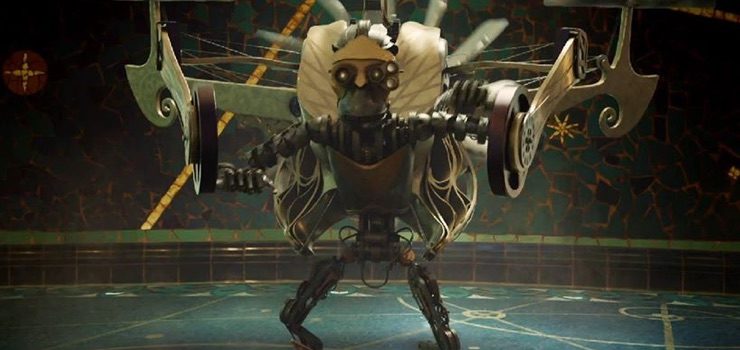
Still, I’m left with questions. Many questions. Such as:
- How is the Scarecrow even alive? Sure, in the books, no one in Oz can ever die, but in the show, everyone can die—and plenty of people did.
- Why, given their last encounter, are Dorothy and the Scarecrow even speaking to each other?
- Since Toto is also from Kansas, why didn’t Dorothy try to bring him back to Kansas with her?
- Why did Jane and Frank set up a transportation device that could only be operated by someone standing OUTSIDE of it, unable to travel along?
- Why didn’t the rest of the characters all band together to kill Dorothy?
And only a slight chance of getting any answers: the ratings for Emerald City make it highly unlikely that NBC will approve a second season, and few other networks have the pockets to pay for a production that looks this lavish and splendid. We’ll just have to hope that in another few years, someone else will take a look at Oz in all of its weirdness and fun, and try to create yet another version of this fairyland.
Mari Ness lives in central Florida.










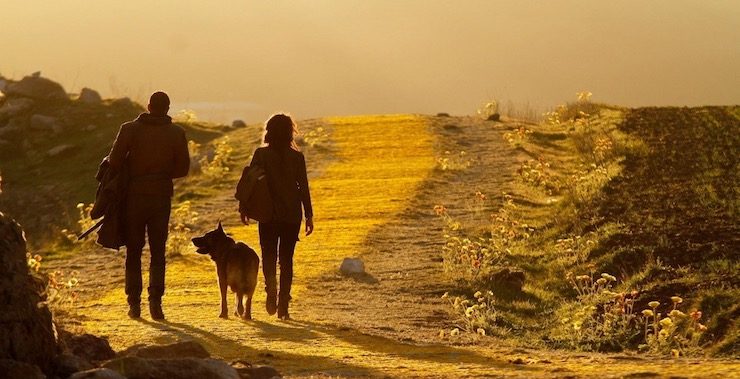
I see that the show has not improved on the hot mess that was the first episode. Very glad I bailed on it. (How do you ignore an 80-pound dog for hours at a time?)
Honetly, I think they they confused Baum’s Oz with HBO’s Oz and never corrected course.
I agree 1000%–and yet I watched until the end, hoping it would get better. About halfway through, I realized that what I think I really want is a steampunk animated version of the entire Baum mythos, including Oz but all his other books too.
I loveed Emerald City, hoping for more. At times was confusing. This series was one of the best things that happened ot NBC Friday nights. Only program I would wait for all week. I think if they renew another season it will definitely catch on Especially with all of the critical coments. Just need a little adjustment.
Re. the ending, time seems to flow faster in Oz. Dorothy may have been returned a day, but in Oz it may well have been weeks (her entire time in Oz, certainly at least a few days, only took 10 minutes, apparently). That’s plenty of time for things to go badly sideways and for Scarecrow to get over his “murder the girlfriend to make nice with the wife” complex, and she’s always seemed to prefer talking to summary executions, when her opponent is willing to play ball.
I completely missed that the flayed man/Beast Forever was supposed to be the Nome King. Was that actually hinted at in the script itself, or did you have to read the credits to pick up on it?
And what was the transformation sequence that reminded you of a book illustration?
I know it’s only a minor quibble, but I think your complaints about the tattoo are a bit unfair. Firstly, tattoos hardly require modern technology; I wouldn’t be at all surprised if Oz had tattoo parlors, and for that matter, I have no trouble believing that Jane was capable of doing it herself (especially such a simple one). Secondly, giving one to an infant isn’t really that much crueler than circumcision or ear-piercing, and she may have been afraid (rightly, as it turned out) of becoming separated from Dorothy, and wanted a way to identify her.
I had such high hopes for this show because I love dark takes on children’s stories that are already complicated… But there were so many problems. Dorothy’s choices were random and unsupported. Tip as a trans-man was poorly handled and deeply problematic. Jack’s quasi relationship with Langwidere was also deeply problematic. Scarecrow being married to Glinda came out of nowhere and made zero sense. Jane turning out to be Dorothy’s mom came out of nowhere and was clearly just written in to force Dorothy to go back home.
Basically nothing made sense. I was so disappointed. With such a beautiful show and generally decent actors, it would have been enough to have a relatively simple plotline. The drama with Ev (as a country and person) could have waited for the next season, giving us time to have ACTUAL CHARACTER MOTIVATIONS.
Alas.
She stole drugs as she needed them for her Uncle/Adoptive Father… with their farm, it’s unlikely they would qualify for the lower income status, even if they weren’t too proud to consider it. Em doesn’t want her to do it, but at the same time can’t refuse it… it would lead to no good end.
Ozma identifies as a boy, forced or not, he’s never felt anything else… but as the ruler of all of Oz, all the witnesses nor the limited power of the witches matter… they all know the story of the princess. A princess that has yet to rule or be known by her people, which means he cannot take form until she earns the trust of the kingdom – as an official, she has a duty to her kingdom first, when the threat of war lessens or trust has been gained, then he can let the people know his heart.
but just as much of our world still doesn’t understand transgender, regardless of how you find it “problematic” you can’t expect them to magically accept it or understand it, they’re not likely to either. Their society is despite all its wonders remains centuries behind ours in its social and cultural condition. And as part of a magic, magic which has been banned under great threat for the last few decades.. threat of the wizard and perhaps by Glinda which makes a distinction between witches and apparently even the few others that might be of a magical nature. They may have a hard enough time accepting Ozma as a witch, let alone a shapeshifter which rumors of could spread quicker than truth… the people don’t seemingly understand magic anymore than gender dysphoria. Perhaps there are some in other lands that do.
The rest of it is quite easily understandable.. but I dare say that the greater conflict of the show comes from its viewers that desire something more hamfisted, hackneyed and musical… longing for nostalgia or asking it to be something it’s not.
It had a good start. I’ll be sorry if it goes, and pity those that require someone to hold their hand to explain every bit of the show that comes off as more legit than coddling either side of the american divide.. to which I’ve seen americans upset that the lead is not a reporter from buzzfeed or others wishing she was something they believe they remember but only through the lens of conservative media.
examine the story as something onto itself – containing familiar elements, like what happens every time star trek is rebooted or given another series – and it should be easier for you all to view as something independent than setting anchor on baggage it will never claim